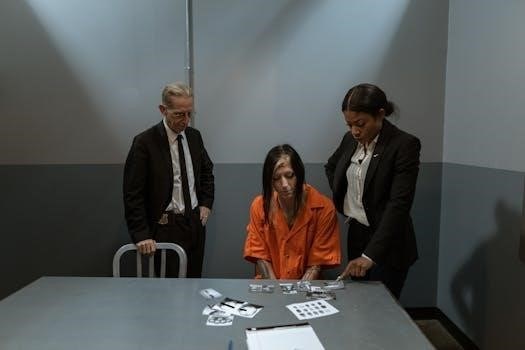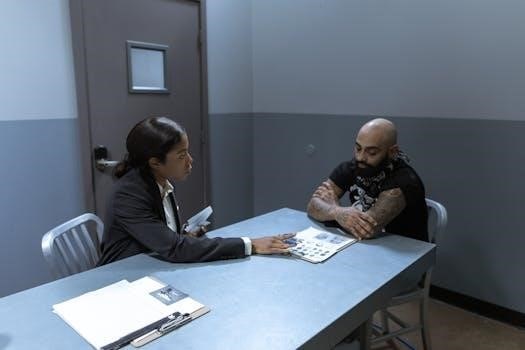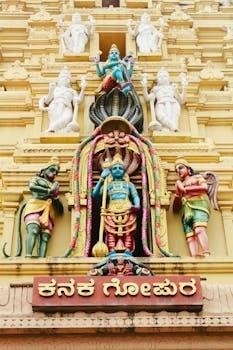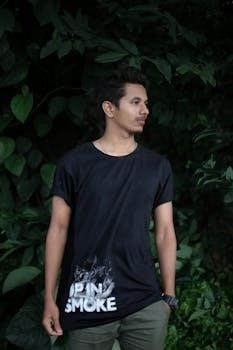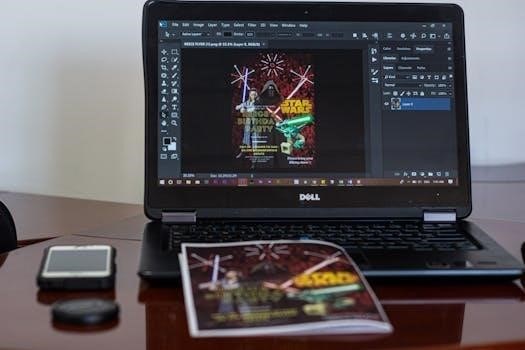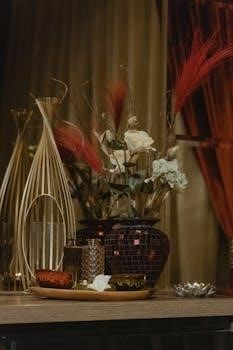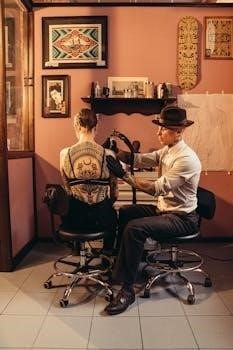New Home Walk-Through Checklist PDF⁚ A Comprehensive Guide
Embarking on the journey of purchasing a new home is an exciting milestone. A crucial step is the new home walk-through, where a detailed inspection using a checklist PDF ensures potential issues are identified. This comprehensive guide highlights the importance of that checklist.
A new home walk-through checklist is an indispensable tool for prospective homeowners. It serves as a structured guide during the final inspection of a new property before closing. This checklist, often in PDF format for easy access and printing, helps buyers meticulously examine various aspects of the home, from structural integrity to the functionality of appliances.

The primary purpose of the checklist is to identify any defects, deficiencies, or incomplete work that needs to be addressed by the builder or seller before the purchase is finalized. By systematically working through the checklist, buyers can ensure that no critical areas are overlooked, safeguarding their investment and preventing potential headaches down the road. A well-prepared checklist empowers buyers to approach the walk-through with confidence, armed with a clear plan to assess the home’s condition comprehensively. This proactive approach can lead to smoother transactions and greater peace of mind for new homeowners.
Importance of a Detailed Inspection Before Buying
Undertaking a detailed inspection before buying a new home is of paramount importance, safeguarding your investment and ensuring peace of mind. While new constructions are generally expected to be flawless, hidden defects or overlooked issues can surface later, leading to costly repairs and frustration. A thorough inspection acts as a preventative measure, helping you identify potential problems before they escalate.
Engaging a professional home inspector or utilizing a comprehensive checklist PDF allows you to meticulously examine every aspect of the property, from structural components to electrical and plumbing systems. This detailed assessment enables you to negotiate repairs with the seller or builder, ensuring that any deficiencies are addressed before you finalize the purchase. By investing time and effort in a detailed inspection, you gain valuable insights into the home’s condition, empowering you to make informed decisions and avoid unwelcome surprises down the line, securing your financial future and overall satisfaction with your new home.
Key Areas Covered in a New Home Walk-Through Checklist
A comprehensive new home walk-through checklist PDF encompasses several key areas to ensure a thorough evaluation of the property’s condition. Primarily, the checklist addresses the exterior, scrutinizing the foundation for cracks, siding for damage, and the roof for potential leaks or mold growth. Moving indoors, the checklist covers interior walls, floors, and ceilings, noting any imperfections or signs of water damage. Electrical systems are assessed, including outlets, switches, and fixtures, guaranteeing proper functionality and safety.
Plumbing systems are examined for leaks and adequate water pressure, while HVAC systems are inspected to ensure efficient heating and cooling. Appliances, such as refrigerators and ovens, are tested for proper operation. The checklist also emphasizes the importance of checking for mold and water damage, particularly in areas prone to moisture. By systematically addressing these key areas, the checklist provides a structured approach to identifying potential issues, empowering buyers to make informed decisions before finalizing their home purchase.
Exterior Inspection Checklist Items
The exterior inspection is a critical component of the new home walk-through, focusing on the structural integrity and overall condition of the property’s exterior elements. The checklist begins with the foundation, meticulously examining it for any signs of cracks, settling, or water seepage, which could indicate underlying structural issues. Next, attention is given to the siding, checking for damage, rot, or improper installation, ensuring it provides adequate protection against the elements. The roof is thoroughly inspected for missing or damaged shingles, leaks, and proper drainage, safeguarding the home from water intrusion.
Furthermore, the checklist includes an assessment of the landscaping, ensuring proper grading to prevent water from pooling around the foundation. Windows and doors are examined for proper sealing and functionality, preventing drafts and energy loss. Finally, the checklist covers exterior fixtures, such as lights and outlets, verifying their proper operation and safety. A comprehensive exterior inspection helps identify potential problems early on, saving homeowners from costly repairs in the future.
Interior Inspection Checklist Items
The interior inspection is a vital step in the new home walk-through, concentrating on the condition and functionality of the home’s interior components. The checklist starts with the walls and ceilings, examining them for cracks, water stains, or signs of mold, which could indicate structural or moisture issues. Floors are meticulously inspected for levelness, damage, and proper installation, ensuring safety and aesthetics. Doors and windows are checked for smooth operation, proper sealing, and secure locking mechanisms, contributing to energy efficiency and security.
Furthermore, the checklist includes a thorough assessment of the kitchen and bathrooms, focusing on the condition of cabinets, countertops, and fixtures. Plumbing fixtures are tested for leaks and proper drainage, preventing water damage. Electrical outlets and switches are verified for functionality and safety, ensuring proper electrical connections. Finally, the checklist covers the heating and cooling system, checking for proper operation and airflow in each room. A comprehensive interior inspection helps identify potential problems early, preventing costly repairs and ensuring a comfortable and safe living environment.
Electrical System Checklist Items

The electrical system inspection is a critical phase of the new home walk-through, ensuring safety and functionality. Begin by testing all electrical outlets in every room using an outlet tester to confirm proper wiring and grounding. Check the operation of all light switches, including dimmers, to ensure they control the intended lights and function smoothly. Inspect the electrical panel for proper labeling of circuits, ensuring easy identification during future maintenance or emergencies.
Furthermore, the checklist includes examining all visible wiring for damage, exposed wires, or improper connections, addressing potential fire hazards. Test all ground fault circuit interrupter (GFCI) outlets in bathrooms, kitchens, and outdoor areas to ensure they trip properly, protecting against electrical shock. Verify the presence and proper operation of smoke detectors and carbon monoxide detectors on each level of the home, confirming they are hardwired with battery backups. Assess the condition of light fixtures and ceiling fans, ensuring they are securely mounted and functioning correctly. A thorough electrical system inspection is essential for preventing electrical hazards and ensuring a safe living environment.

Plumbing System Checklist Items
A thorough plumbing system inspection is vital during a new home walk-through, ensuring proper functionality and preventing costly repairs. Begin by checking all faucets and fixtures for leaks, drips, or signs of corrosion, paying close attention to connections under sinks and around toilets. Inspect the water pressure in all faucets and showers, ensuring adequate flow throughout the house. Flush all toilets to verify proper flushing and refilling, checking for leaks around the base and tank.
Examine visible pipes for signs of damage, leaks, or improper connections, addressing any potential issues promptly. Check the hot water heater for proper installation, venting, and temperature settings, ensuring efficient and safe operation. Inspect all drains for slow drainage or clogs, running water for an extended period to identify any potential problems. Verify the presence and proper functioning of any sump pumps, particularly in basements or crawl spaces, to prevent water damage. A comprehensive plumbing system inspection safeguards against leaks, water damage, and ensures a reliable water supply.
HVAC System Checklist Items
Ensuring the heating, ventilation, and air conditioning (HVAC) system functions correctly is crucial for comfort and energy efficiency in a new home. Begin by inspecting the air filters for cleanliness, replacing them if necessary to maintain optimal airflow. Test the heating and cooling functions, ensuring the system effectively heats and cools the house to the desired temperatures. Check all vents for proper airflow, ensuring even distribution of heated or cooled air throughout the rooms. Examine the thermostat for accuracy and responsiveness, calibrating or replacing it if needed.
Inspect the outdoor unit for any visible damage, debris, or obstructions that may affect its performance. Listen for unusual noises during operation, such as rattling, squealing, or grinding sounds, indicating potential mechanical issues. Verify that all ductwork is properly sealed and insulated, preventing air leaks and energy loss. Check the carbon monoxide detectors and ensure they are functioning correctly, safeguarding against potential hazards. A thorough HVAC system inspection ensures efficient, safe, and reliable climate control, enhancing comfort and minimizing energy costs.
Appliance Inspection Checklist Items
When conducting a new home walk-through, meticulously inspecting appliances is essential. Begin with the refrigerator, ensuring it cools properly and the freezer functions effectively. Check the oven and stovetop, verifying that burners ignite and the oven heats to the correct temperature. Inspect the dishwasher, running a cycle to ensure proper cleaning and drainage. Examine the microwave, confirming it heats food evenly and the turntable rotates smoothly. For the washing machine, run a test load to check for leaks and proper spin cycles.

Similarly, test the dryer, ensuring it dries clothes efficiently and the lint trap is clean. If the home includes a garbage disposal, test its functionality and listen for unusual noises. Inspect the range hood, verifying that it vents properly and the fan operates at various speeds. For any built-in appliances, ensure they are securely installed and function as intended. Document the model and serial numbers of all appliances for warranty purposes. A detailed appliance inspection ensures that all provided amenities are in working order.
Checking for Mold and Water Damage
During a new home walk-through, meticulously checking for mold and water damage is crucial. Begin by inspecting areas prone to moisture, such as bathrooms, kitchens, and basements. Look for visible signs of mold, including discoloration, staining, or fuzzy growth on walls, ceilings, and floors. Pay close attention to areas around plumbing fixtures, windows, and doors, as these are common entry points for water.
Sniff for musty or damp odors, which can indicate hidden mold growth. Check for water stains or discoloration on ceilings and walls, which may suggest leaks from above. Inspect the foundation for cracks or signs of water seepage. Examine the exterior of the home for proper drainage and signs of standing water near the foundation. If you suspect mold or water damage, consider hiring a professional inspector to conduct a more thorough assessment. Addressing these issues early can prevent costly repairs and health problems down the line. Document all findings in your checklist.
What to Do After the Walk-Through
Following the new home walk-through, it’s imperative to compile a comprehensive list of all identified issues using your checklist PDF. Prioritize these findings based on severity and potential impact. Immediately communicate these concerns to the builder or seller, providing clear documentation and photographic evidence where possible. Negotiate a resolution plan, outlining who is responsible for repairs and the associated timelines.
Obtain written confirmation of the agreed-upon repairs, including specific details and completion dates. If necessary, consult with a real estate attorney to ensure your rights are protected and the agreement is legally binding. Schedule follow-up inspections to verify the completion of repairs and ensure they meet your satisfaction. Retain all documentation, including the original checklist, repair agreements, and inspection reports, for future reference. Remember to address any remaining concerns before closing the deal. Don’t hesitate to seek professional advice to navigate complex issues and safeguard your investment. A proactive approach ensures a smooth transition into your new home.
Creating Your Own Customizable Checklist PDF
Crafting a personalized new home walk-through checklist PDF empowers you to tailor the inspection process to your specific needs and concerns. Begin by identifying key areas of focus, considering the unique features and potential vulnerabilities of your new home. Incorporate items from existing templates, but customize them to reflect your priorities. Add sections for specific appliances, systems, or construction details relevant to your property.
Utilize a spreadsheet program or document editor to create a structured checklist with clear categories and checkboxes. Include space for notes and observations to document findings thoroughly. Convert your checklist into a PDF format for easy sharing and printing. Consider adding digital features, such as fillable forms or interactive elements, for enhanced usability. Regularly update your checklist based on your experiences and feedback from professionals. By creating a customizable checklist, you ensure a comprehensive and effective inspection, empowering you to protect your investment and address potential issues proactively. Remember to consult professional inspectors when necessary.
















